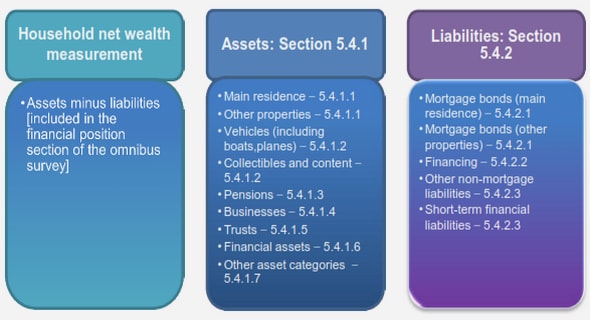Get Complete Project Material File(s) Now! »
Optimal centralization and tax base mobility
Introduction
The extent to which countries should centralize the provision of public goods depends on a well-known trade-off : the positive spillovers and returns to scale allowed by a cen-tral provision must balance the lack of adaptability to local preferences, better met by a decentralized system. The issue of how should taxation and spending in multi-layered government structures be assigned dates back to Oates et al. (1972). A central government can exploit spillovers but provides a ’one size fits all’ level of public goods that might leave some jurisdictions worse-off as not all households desire the same amount of public spend-ing.
We take a fresh look at the issue of centralization through the lens of tax base mo-bility and erosion. In the existing literature on optimal fiscal federalism, spillovers and returns to scale in public good provision usually favor the central level (as in Lorz and Willmann (2005) or Besley and Coate (2003) for example). The novelty of our paper is to consider an optimal centralization problem balancing heterogeneous preferences and local tax distortions caused by base erosion. In particular, we see the central government as an entity providing public goods without suffering from base erosion, instead of exploiting spillovers. In a federal structure where regional governments finance public goods while capital is freely mobile between them, local public goods are underprovided (Zodrow and Mieszkowski, 1986; Wildasin, 1988). Local governments set their tax rates to maximize their respective household’s utility. Due to capital mobility, the cost of public spending is distorted and leads to a suboptimally low equilibrium level of public good provision. In our setting, a central government levies uniform taxation without triggering any capital flow, hence without any tax distortion. The drawback being, as mentioned, that a uniform level of spending may conflict with local preferences.
The study of the optimal allocation of public good provision between the central and local levels comparises many aspects studied in the literature on fiscal federalism, such as vertical tax competition or strategic delegation. We mainly retain two features which, to our knowledge, have not been combined in the existing literature. In this paper, we focus on preference heterogeneity and tax distortions due to tax base mobility.
Empirically, a trend towards decentralization can be observed among OECD countries (Bl¨ochliger et al., 2016). Looking at how much the sub-central public sector accounts in terms of total government revenue and expenditure, many countries have increased the portion of taxes and spending at the local or regional levels (Figure 1), most notably in Spain and Italy for example. As local governments retain more fiscal power and respon-sabilities, local taxes become important instruments shaping incentives and allocation of factors: numerous studies highlight the sensitivity of tax bases to local taxation (Bl¨ochliger and Campos, 2011). For instance, Swiss cantons are among the strongest regional govern-ments in terms of tax autonomy and competencies, and at the same time evidence of tax competiton among them is strong (Feld and Kirchg¨assner, 2001). At the other side of the spectrum, Norway embarked in a re-centralization process, while in a context of fiscal competition regarding local welfare systems (Fiva and Rattsø, 2006). Notably, with the 2002 health care reform, the central government took over ownership and management of public hospitals. Before the reform, the decentralized health care system at the county Source: OECD Fiscal decentralization database, Bl¨ochliger et al. (2016). level was blamed for inefficiencies in public good provision, with long waiting lists or low financial responsability (Hagen and Kaarbøe, 2006). The centralization reform took place although disparities in terms of desire for hospital services, such as specialized medicine for example, between rural areas and cities were strong. One may wonder what drives these choices regarding the allocation of public goods.
At the European level, the extent of centralization in public good provision is of prime importance, in connection with the issue of subsidiarity. So far, few areas of economic policy are centralized such as competition and trade policies, common agricultural policy and monetary policy for members of the Eurozone. The existing EU budget remains at a very low level,1 and it relies on national contributions that are sometimes negotiated downwards by the Member states, in relation with the controversial issue of the ”juste retour ” (fair return).2 Projects to provide the EU budget with own resources, such as a European corporate income tax, are still in the infancy. Hence, despite the fact that some policies exhibit significant externalities and returns to scale that would justify their provision at the Union level, such as defense or security, the central budget remains small. As for the EMU, there is no Eurozone budget although fiscal capacity is identified by both theory and policy circles as an important alternative stabilization instrument to compensate for the loss of monetary policy. Yet, the existing EU budget finances policies that do not necessarily respect the subsidiarity principle (CAP, structural funds). Hence, over the past few decades, EU involvement has extended to policy domains with low economies of scale while remaining absent on areas where its action appears justified (Alesina et al., 2005b).
Tax externalities and preference heterogeneity may explain why European countries have proved unwilling to set up a significant central budget. Looking at preferences, Eu-ropean citizens diverge on whether more decision should be taken at the EU level or not. Figure 2 reveals heterogeneous taste of citizens for centralization at the EU level.
Against this background, our contribution is to analyze optimal centralization among jurisdictions which not only exhibit heterogeneity in their tastes for public goods, but also set their taxes on a mobile tax base to provide those public goods. We build a one-period theoretical model with a federal structure made of one central authority and n small local jurisdictions. In our model, central and local governments levy source taxes on mobile capital to finance their respective allocation from a continuum of public goods. The contribution of this paper is to analyze the design of fiscal federalism, where the optimal degree of centralization makes the balance between the strength of base erosion and the heterogeneity in preferences. On the one hand, local governments provide public goods that only their respective households enjoy. But due to base erosion, those are underprovided. On the other hand, the central government provides public goods that all households enjoy, and since it levies a uniform federal tax those goods are protected against base erosion.
2 see European Budget: the poisonous budget rebate debate, Le Cacheux J., Notre Europe, 2005. The current system also includes correction mechanisms such as rebates that add to its complexity and opacity. See How the EU budget is financed the own resource system and the debate on its reform, EPRS, 2014.
However, the level of good being uniform, it incurs a cost in terms of adaptability to preferences. Hence, the optimal centralization makes the balance between eliminating base erosion and respecting local tastes for public goods.
Our model comprises two stages. First, the degree of centralization, i.e. the allocation of each public good policy between the local and central levels is established. Second, gov-ernments (central and local) set taxes and expenditures for each good. Solving backwards, we start by presenting how public goods are provided, then we study the optimal degree of centralization. We adopt a measure to assess the efficiency of centralization close to Janeba and Wilson (2011), although their paper does not study preference heterogeneity. We evaluate the optimality of the federal structure by isolating two types of inefficiencies: local tax distortions and lack of adaptability to preferences at the center. We characterize optimal centralization as the system minimizing the total deadweight loss of public good provision associated with these two aspects.
The first result of the paper is that centralizing the provision of some public goods increases the level of the goods that stay at the local level. Second, we explain that while centralization is desirable when base erosion is high, it can also be the case with high heterogeneity of preferences. Third, we show that full centralization cannot be an optimal system, while full decentralization might be depending on base erosion and preference heterogeneity.
Related literature
The distribution of public goods between the local and the central level is key to the fiscal federalism literature.3 Recent contributions have shed new light on Oates’ seminal decen-tralization theorem (1972), which stipulates that strong spillovers in public good provision favor the central level while high heterogeneity in preferences makes the case for a decen-tralized system. The trade-off between adaptability to local tastes and economies of scale is at the core of the international unions model in Alesina et al. (2005a). They study the conditions under which the members of a union, where some public goods are centralized to exploit spillovers but provided according to the mean preference, will accept a new member. They find that for the new member to be included, the greater positive externality that comes from the inclusion of another country must make up for the change in the political equilibrium that may move to a point that conflicts with preferences.
The amount of public good and size of the union are then endogenously determined by the number of members, the strength of spillovers and the preferences of the median country. Adopting a political economy approach, Besley and Coate (2003) depart from the assumption that the central government provides a uniform level of public good to identify other costs of centralization. Namely, they show that strategic delegation (voters electing a local representative to set policy at the central level) induces constituents to delegate policy-making to a represen-tative that has a different taste than their own, leading to sub-optimal outcomes. Janeba and Wilson (2011) also stress the importance of the political process and focus on the opti-mal level of decentralization. They define it as the one yielding the best trade-off between inefficiencies at the regional (underprovision due to tax competition) and at the central level (provision being decided by a minimum winning coalition that does not represent the interests of all citizens). Finally, Lorz and Willmann (2005) establish that under strategic delegation, the level of centralization will be too low compared to social optimum as voters have an incentive to elect representatives with a lower taste for public good than their own.
Table of contents :
I Optimal centralization and tax base mobility
1 Introduction
2 Related literature
3 Local and central policies
3.1 Model set-up
3.2 Equilibrium levels of public goods
3.3 Capital allocation
4 Optimal centralization
4.1 Impact of centralization on public good provision
4.2 Evaluation of centralization efficiency
4.3 Does base erosion favor centralization? Does heterogeneity?
4.4 The optimal degree of centralization
5 Conclusion
6 Appendix
II Tax competition and club formation
1 Introduction
2 Model set-up
3 Tax equilibrium
3.1 No cooperation
3.2 Partial cooperation
3.3 Full cooperation
4 Club formation
4.1 How does the tax equilibrium evolve with m?
4.2 When does a club emerge? Can full cooperation be reached?
4.3 Illustration and robustness checks
5 Conclusion
6 Appendix
III Unemployment insurance union
1 Introduction
2 Literature review
3 Model
3.1 Labor markets
3.2 Households
3.3 Firms
3.4 Nash bargaining
3.5 Monetary policy
3.6 National governments
3.7 Goods and financial trade
4 Design of the European unemployment insurance
4.1 European benefits and taxes
4.2 EUI scenarios
5 Calibration
5.1 Euro area calibration
5.2 Model steady-state and second moments
6 Results
6.1 Impulse response functions : baseline
6.2 Impulse response functions : EUI
7 Conclusion
8 Appendix
IV Euro area unemployment insurance and the ZLB
1 Introduction
2 Related literature
3 Model
3.1 Labor markets
3.2 Households
3.3 Firms
3.4 Wage
3.5 Governments
3.6 Market clearing
4 Calibration
4.1 Euro area calibration
4.2 Second moments of the model
5 Simulations
5.1 Assessing the benefits of the EUBS at the zero lower bound
5.2 Extension: periphery government cut from financial markets
6 Conclusion
7 Appendix


